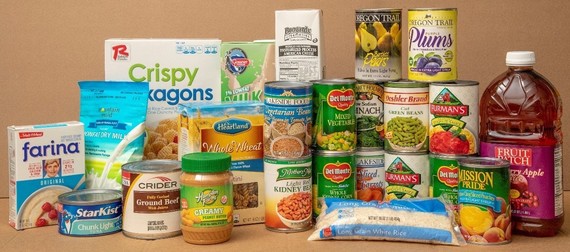|
The Commodity Supplemental Food Program (CSFP) food package has been enhanced with new items, additional flexibilities, and increased quantities in some food package categories. On February 1, 2020, CSFP food packages should begin following the revised Distribution Rate found in Attachment B of the October 25, 2019 policy memo.
The food package enhancements have been made in collaboration with the CSFP community and program operators. Resources to assist stakeholders in this transition can be found on our website in the CSFP Food Package Toolkit. In the enhanced monthly food package, some changes include:
- Double the amount of vegetables;
- More protein, including plant-based proteins such as canned and dry beans;
- More options within each food category, such as brown rice and soup;
- Smaller package sizes of rice, oatmeal, grits, dry beans, and non-fat dried milk that are more appropriate for small households and that allow clients to receive a greater variety of options in their food package each month.
The new food items added to the food package include:
- Canned black beans
- Canned kidney beans
- Canned pinto beans
- Dry lentils
- Dehydrated potato flakes
- Raisins
- Brown rice
- Vegetable soup

Legumes are a category of plant-based protein that includes beans, peas and lentils. They are a great source of nutrients including fiber to promote healthy digestion, protein to help maintain muscle function, iron to give the body energy, folate which can support heart health, and magnesium which provides many benefits such as supporting healthy bones and healthy digestion.
Legumes are a staple food in many parts of the world and can be used in a variety of different ways in recipes. Entrees featuring legumes can include favorites such as lentil soup, kale and white bean soup, or minestrone soup, chili, bean burgers, hoppin’ john, 5-bean casserole, bean burritos or enchiladas. Popular side dishes made from legumes include baked beans, beans and greens, refried beans, seasoned black beans, bean salads, succotash, hummus, white bean dip, and beans and rice.
For legume recipe ideas, check out the USDA MyPlate Kitchen. Legume options are now offered to CSFP programs in both dry and canned forms. We encourage you to talk to your participants about which types of legumes they would prefer and offer recipes or food demos to help participants find new ways to use these new options!

The CSFP Food Package Toolkit was created to help you prepare for the implementation of the enhanced CSFP Food Package. February 1, 2020 is quicky approaching, are you ready?
Check out these resources to make sure you have the latest information about the new items added to the food package, additional flexibilities, and increased quantities in some food package categories:
All of these resources, and more, including webinars and CSFP-specific e-letters can be found in the CSFP Food Package Toolkit!

This will be the final edition of the CSFP Special Edition: Food Package Updates e-letter. Links to each e-letter can be found in the CSFP Food Package Toolkit. Thanks for tuning in and good luck with your implementation of the enhanced CSFP Food Package!
If you wish to share feedback with USDA on the implementation of the enhanced CSFP food package email us at USDAFoods@usda.gov.
We will continue to feature CSFP highlights and updates in the quarterly "Household Highlights" edition of the USDA Foods from Farm to Plate e-letter. Subscribe by clicking here.
|
|